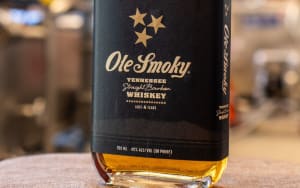Well this is a new one. In a unique collision of history, science, and craft distilling, Mammoth Distilling of northern Michigan has started to create whiskey from rye grains recovered from a 150-year-old shipwreck. This story has grabbed both the attention of whiskey lovers and history buffs alike.
Unearthing History from the Depths of Lake Huron
The J.S. Bentley, a ship that went down in Lake Huron in 1876, is where the narrative begins. Divers found a unique treasure among the wreckage: rye grains that had been preserved for over 150 years. The 160-foot-deep shipwreck is one of the few privately held underwater locations, so Mammoth Distilling may study it without facing any legal restrictions.
When the rye was found by divers in September, they discovered that although around half of the seeds had died, the remaining ones still had starch, which is what gives seeds their energy to germinate. Unaffected by seed banks or contemporary farming practices, this uncommon discovery indicates a pre-modern rye variety. It provides a unique glimpse into the agricultural past and predates all known identified varieties of rye in the United States.
From Shipwreck to Whiskey: The Science Behind the Spirit
It has been a technological and agricultural struggle to turn these ancient grains into whiskey. Mammoth Distilling worked together with Michigan State University (MSU) to look at the genetic composition and survivability of the seeds. By sequencing the rye's DNA, MSU researchers were able to find its closest contemporary cousins. This study paves the way for the development of hybrid rye types that blend attractive distillation qualities with historical importance.
“The wet seeds would not germinate, but half have undergone drying and are being bathed in hormones to stimulate germination.” ~ Mammoth co-founder Chad Munger
A Journey Over Many Years to Find the Ideal Rye Whiskey
Even though the restored rye isn't ready for widespread planting and distillation just yet, Mammoth plans to bring this "Bentley rye" back to life in the years to come. The method involves growing the hybrid rye, harvesting it, and then distilling it to create whiskey. This meticulous process reflects the distillery's dedication to blending science, agriculture, and artistry.
In the meanwhile, Mammoth Distilling has created a whiskey that draws inspiration from the shipwreck. Shipwreck Volume 1: The distillery issued J.S. Bentley, a 24-year-old Canadian whiskey finished with toasted staves from the ship's recovered lumber. Costing over $500, this limited edition pays homage to the Bentley's history while offering a sneak peek at its future.
A Tradition of Innovation
Heritage grain experiments are nothing new to Mammoth Distilling. In the past, the distillery has collaborated with Rosen Rye, growing it on South Manitou Island with National Park Service licenses. Another illustration of their creative approach is their Northern Rye series, which creates distinctive taste profiles by combining whiskeys sourced and produced in-house and matured in different barrels.
"We have access to a variety of rye that predates seed banks and any named variety of rye in the U.S. thanks to the recovery of rye from the Bentley," ~ Mammoth co-founder Chad Munger
The goal of this historical and scientific fusion is to preserve a portion of agricultural tradition, not merely to produce whiskey.
What Lies Ahead
The Bentley rye project exemplifies the strength and drive of Mammoth Distilling. The anticipation just makes the whiskey produced from this historic grain more alluring, even if it won't likely be available for purchase for a few years. In the meanwhile, whiskey enthusiasts may enjoy the distillery's existing lineup, which includes the J.S. Bentley-inspired offering.
Through its commitment to creativity and historical awareness, Mammoth Distilling is not only creating a product but also narrating a story that connects the past, present, and future of whiskey-making. Bentley rye whiskey will be more than just a drink when it finally makes its debut; it will be a taste of the past revived and reimagined for a modern market.




